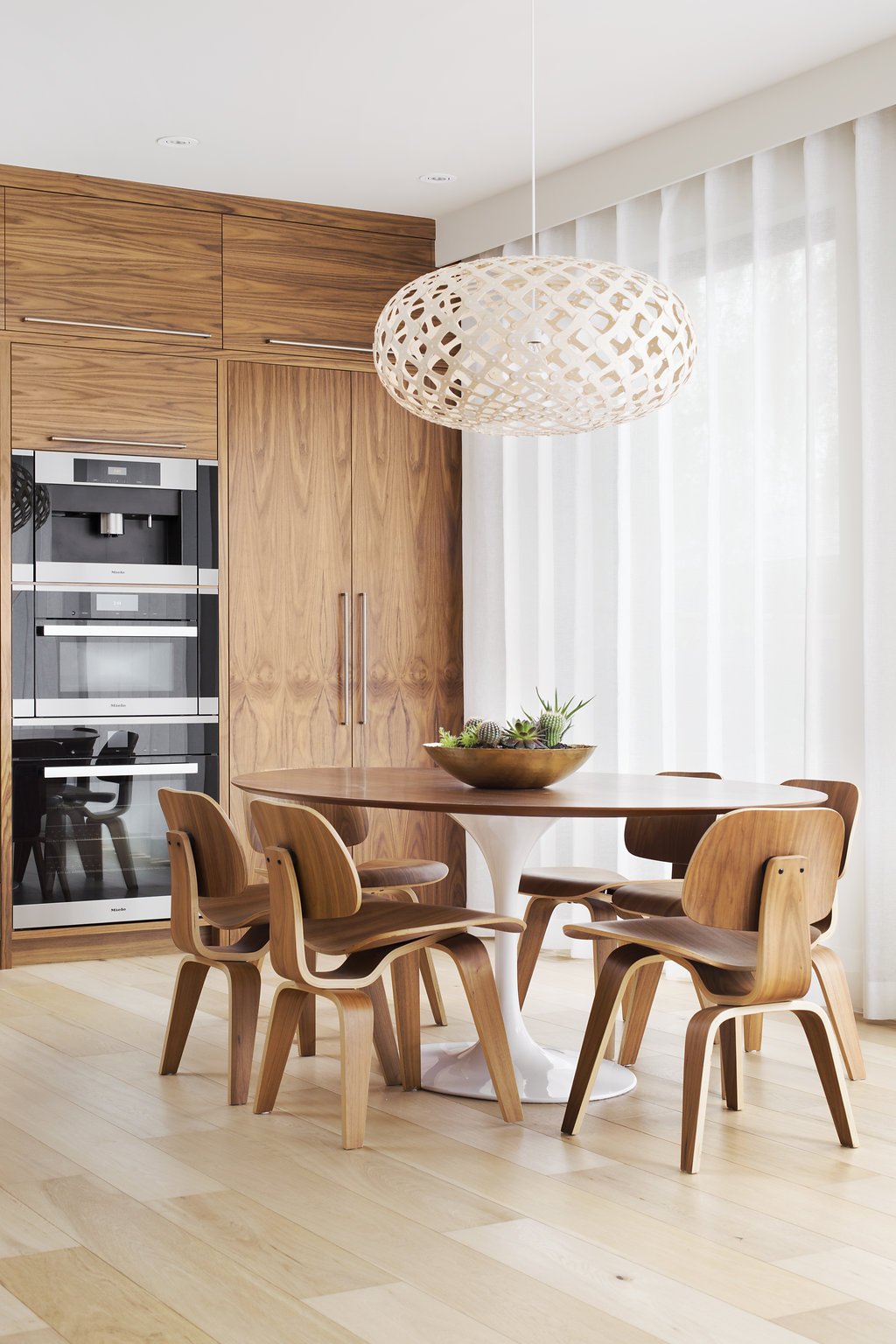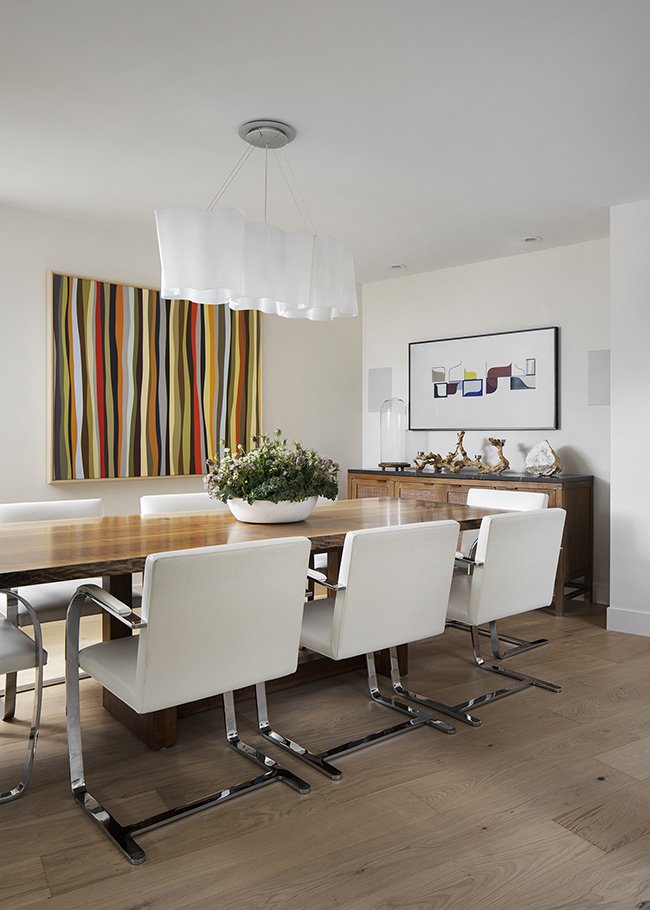The Dining Room
Your dining room is more than just a place to enjoy a meal; it's the heart of your home, where treasured memories are made with family and friends. From festive meals and family game nights to makeshift home offices and homework stations, the dining room is a multi faceted room. Read on for our top six tips on how to create the most functional and beautiful dining room.
1. Define the Purpose and Layout
Before diving into any design plans, consider how you want to use the space. Will it be primarily used for formal dining, casual family dinners, or large get togethers? This will determine the layout and furniture choices. To accommodate various occasions consider an extendable table and having extra chairs on hand for larger gatherings. Don’t forget to map out the table in it’s extended form to make sure your space has enough room to accommodate it.
Dashney Interiors - Lakehouse Contemporary Dining Room
2. Choose the Right Lighting
Lighting plays a crucial role in creating the desired ambiance in your dining room. A statement chandelier acts as a focal point while providing ample illumination for meals. You’ll also want to consider a recessed lighting plan to provide an extra layer of light for tasks such as homework. Dimmers help to control the lighting intensity and create a more intimate atmosphere for special occasions.
3. Select the Perfect Table and Chairs
The dining table and chairs are the centerpiece of any dining room. Choose a table size that fits the room proportionally, leaving enough space for maneuvering around it. When it comes to chairs, comfort is paramount. Upholstered chairs can add a touch of elegance and extra comfort for longer meals, while sleek and modern chairs can create a contemporary feel.
Dashney Interiors - Mid Century Modern Dining Room
4. Pay Attention to Colors and Textures
The choice of colors and textures can significantly impact the overall atmosphere of your dining room. Lighter hues like whites and neutrals will have a light & airy effect, while darker colors add depth and create a cozy setting. Experiment with different textures, such as velvet, leather, or wood, to add visual interest and warmth. Statement art pieces add an extra layer of personality and intimacy.
5. Don't Neglect Storage and Display
A well-designed dining room should provide both practical storage and an opportunity for displaying decorative items. Consider incorporating a buffet, sideboard, or a built-in hutch to store tableware, linens, and other essentials. Open shelves or a display cabinet can showcase your favorite dinnerware & glassware
6. Consider Soundproofing
Acoustics can often be overlooked in a dining room, but managing noise levels can greatly enhance the dining experience. Area rugs & drapery go a long way to absorb sound.
By keeping these dining room design tips in mind, you can create a space that not only reflects your personal style but also ensures comfort and functionality for everyone who gathers around your table.







